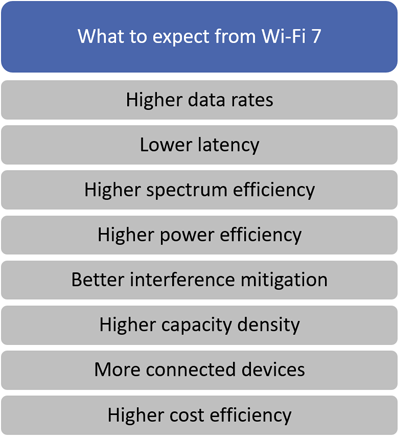As you may have already guessed, the WiFi 7 spec sheet is as incomprehensible as they get, we’ll get to that shortly. Initial demonstrations show speeds that rival the Thunderbolt 3 spec sheet, all this on a wireless connection. Let’s first take a step back and do a refresher course on the naming of WiFi generations. Also Read: WiFi 802.11 ac vs ax vs ad: it’s a choice of speed over distance
IEEE WiFi Naming Nomenclature
Previously, all WiFi was named according to the original Institute of Electrical and Electronic Engineers (IEEE) wireless networking specification, 802.11. On top of 802.11, letters were added to distinguish between generations with a sequence of b, a, g, n, ac, and ax. Why not use something as simple as a, b, c, d …? I too do not know, we may actually never know. However, the WiFi Alliance, discovered how confusing their naming was and switched to a simpler numeric sequence. This change in the naming sequence was to be applied retroactively to the already existing standards as follows;
802.11 renamed to WiFi 0802.11b renamed to WiFi 1802.11a renamed to WiFi 2802.11g renamed to WiFi 3802.11n renamed to WiFi 4802.11ac renamed to WiFi 5802.11ax renamed to WiFi 6802.11be renamed to WiFi 7
Read More: Wi-Fi is adopting version numbers such as WiFi 6
WiFi 7 Specifications
Keeping with the traditions, the powers that be couldn’t have it so simple for us peasants, hence the WiFi 6E. WiFi 6E maintains the 802.11ax branding with the same theoretical speeds as WiFi 6 but could only work with newer devices. That only made WiFi 6E real-life speeds better than Wi-Fi 6. Again, keeping with the subtle consumer confusion theme already in play, WiFi 7 is also to be known as EHT (Extremely High-Throughput). Spec-wise WiFi 7 will have a peak theoretical transfer rate of 46Gbps. However, we should expect real-life speeds of about 40Gbps. Downloading a 50GB game on your PC should take about 10 seconds. Aren’t you mind blown already? Are you wondering what kind of problems need to be fixed by 40Gbps speeds? There are a number of growing internet needs that may actually benefit from WiFi 7, may it be 8k streaming, virtual and augmented reality applications, online video gaming, teleconferencing, video calls, etc. Read More: How to tell if your smartphone supports WiFi 6
Wi-Fi Features
WiFi 7 features 16 MIMO (Multi-input Multiple-outputs) streams compared to the 8 streams on WiFi 6. Basically, the user benefit here is that we will enjoy high-speed connections simultaneously on more devices. Important to note is that a majority of devices like laptops and phones usually have a 2×2 MIMO configuration. What this means is that there are 2 receiving antennas (for input) and two transmitting antennas ( for output). You can now see how a 16×16 router will work with more 2×2 streams at high speeds and minimal interruptions as compared to an 8×8 router. WiFi 7 also features support for 4K quadrature amplitude modulation (QAM). This new WiFi spec will also use the 320Mhz channels and add a multi-user resource unit (MRU). All this put together is what results in a 2.4x speed increment for WiFi 7 over WiFi 6. This theoretical increment will however be eaten into by interference like other networks on the 6GHz and 2.4GHz frequencies, thus the lower (40Gbps ha!) real-life speeds. Read More: How to upgrade from WiFi 5(802.11ac) to WiFi 6(802.11ax)
WiFi 7 release dates
Don’t get too excited about this new specification just yet, it could be until late next year (2023) before we see WiFi 7 devices starting to trickle into the markets. Of course, the first devices to be released will be high-end commercial devices. There is a caveat also, this new tech will only be available in countries that have authorized use for the 6GHz band, same as WiFi 6E. Major countries that have allowed the use of WiFi 6E and WiFi 7 are Canada, the US, UK, and Brazil. Read More: WiFi 6: 802.11 ax is the latest WiFi standard with 10 Gb/s data transfer speeds







